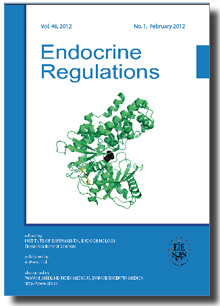Journal info
|
||
Select Journal
Journals
Bratislava Medical Journal Endocrine Regulations 2015 2014 2013 2012 2011 2010 2009 2008 2007 2006 2005 2004 2003 General Physiology and Biophysics Neoplasma Acta Virologica Studia Psychologica Cardiology Letters Psychológia a patopsych. dieťaťa Kovove Materialy-Metallic Materials Slovenská hudbaWebshop Cart
Endocrine Regulations Vol.43, No.1, p.03-11, 2009 |
||
| Title: BRAIN RESPONSE TO INDUCED PERIPHERAL CANCER DEVELOPMENT IN RATS: DUAL FOS-TYROSINE HYDROXYLASE AND FOS-OXYTOCIN IMMUNOHISTOCHEMISTRY | ||
| Author: B. Mravec, L. Lackovicova, Z. Pirnik, J. Bizik, J. Bundzikova, I. Hulin, A. Kiss | ||
| Abstract: Objective. During last few decades a considerable number of data has emerged supporting the hypothesis that central nervous system might monitor and modulate tumor growth. This assumption is based on two facts: 1. immune system plays a crucial role in the development and progression of cancer; 2. immune and nervous systems communicate tightly and bidirectionally. The aim of present study was to elucidate whether tumor growth may induce detectable changes in brain structures that are involved in the response to immune challenges. Methods. Using Fos immunohistochemistry, we investigated whether the advanced stage of cancer, induced by a single intraperitoneal injection of BP6-TU2 fibrosarcoma cells to male Wistar rats, could activate Fos expression in the nucleus of the solitary tract (NTS), amygdala and parabrachial nuclei (PBN) and also activate some of neuronal phenotypes including tyrosine hydroxylase (TH) neurons in the brainstem noradrenergic cell groups and hypothalamic oxytocinergic neurons. Results. Twenty eight days after the initiation of tumor process we found increased Fos expression in NTS/A2, A1 noradrenergic cells, PBN as well as in the hypothalamic paraventricular, supraoptic and accessory oxytocinergic neurons. These structures are involved in the transmission of signals related to immune challenges within the brain and consequent elaboration of neuro-endocrine responses. Conclusions. The data obtained are supporting the view that the information on peripheral tumor development might be transmitted to the brain. However, further studies are necessary to be performed to reveal whether our findings can be attributed to specific effect of cancer or whether observed changes in the activity of brainstem and hypothalamic neurons reflex processes that only accompany the cancer progression. |
||
| Keywords: Brainstem noradrenergic cells – Cancer – Hypothalamic oxytocinergic cells – Immune system – Nervous system – Cancer neurobiology – Rat | ||
| Year: 2009, Volume: 43, Issue: 1 | Page From: 3, Page To: 11 | |
| doi:10.4149/10.4149/endo_2009_01_3 |
||
|
|
 download file download file |
|

